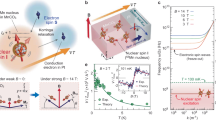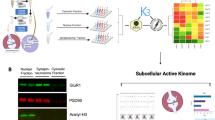Abstract
Singh and Koppelman1,2 fit a kinetic model to data of Harris and Watts3. Their model depends on the equation  where λ is constant. But the data insist that λ is not constant: it changes by a factor of 3.5 during the course of the experiment. Singh and Koppelman2 try to overcome the difficulty by approximating an exponential as a straight line. They do not succeed. Kinetic models based on erroneous assumptions are unacceptable. Any model which can satisfactorily fit the data of Harris and Watts must be rather more sophisticated than that of Singh and Koppelman.
where λ is constant. But the data insist that λ is not constant: it changes by a factor of 3.5 during the course of the experiment. Singh and Koppelman2 try to overcome the difficulty by approximating an exponential as a straight line. They do not succeed. Kinetic models based on erroneous assumptions are unacceptable. Any model which can satisfactorily fit the data of Harris and Watts must be rather more sophisticated than that of Singh and Koppelman.
This is a preview of subscription content, access via your institution
Access options
Subscribe to this journal
Receive 51 print issues and online access
$199.00 per year
only $3.90 per issue
Buy this article
- Purchase on SpringerLink
- Instant access to full article PDF
Prices may be subject to local taxes which are calculated during checkout
Similar content being viewed by others
References
Singh, U. N., and Koppelman, R., Nature, 198, 181 (1963).
Singh, U. N., and Koppelman, R., Nature, 211, 75 (1966).
Harris, H., and Watts, J. W., Proc. Roy. Soc., B, 156, 109 (1962).
Author information
Authors and Affiliations
Rights and permissions
About this article
Cite this article
GILBERT, N. Relationship between Nuclear and Cytoplasmic RNA. Nature 213, 809–810 (1967). https://doi.org/10.1038/213809b0
Issue date:
DOI: https://doi.org/10.1038/213809b0



